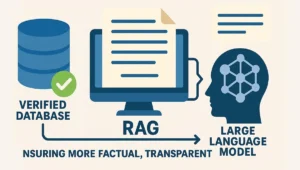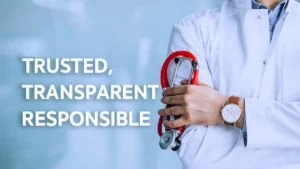You’ve spent hours, days, and even months on your research.
You’ve analyzed the data, interpreted the results, and written a strong scientific paper. But there’s a hidden threat that can bring all of this hard work into question at the very end—errors in your references and citations.
Many researchers view the citation section as a tedious and unimportant task, often leaving it for last.
However, journal reviewers and editors examine this part with great care and precision. A small mistake can be seen as a sign of carelessness, and in some cases, it can even result in the rejection of your paper.
Don’t worry.
In this article, we will explore the seven most common and serious citation mistakes that are often overlooked and show you how to avoid them.
The 7 Critical Citation Errors
1. Mismatch Between In-Text Citations and the Final Reference List
This is one of the most common and unforgivable mistakes.
Picture this: a reviewer reads a citation like (Smith, 2023) in the body of your paper, but can’t find any source by Smith from 2023 in the reference list. Or to make it worse, a source appears in the reference list that was never cited in the text.
- Why it’s a serious mistake: This signals a lack of attention to detail on the part of the author.
It poses a significant question in the reviewer’s mind: “If the author wasn’t careful with this basic task, can I trust the rest of their work?”
- How to avoid it: Once you’ve finished writing, take the time to cross-check each citation in the text with the corresponding entry in your reference list.
Tools like Zotero, Mendeley, or EndNote can be very helpful for maintaining consistency.
2. Inaccurate or Distorted Quotations
Direct quotes are a powerful way to highlight a point. However, that power comes with a responsibility. Incomplete copying of a sentence, omissions without using ellipses (…), or slight changes in wording that alter the original meaning are serious academic issues.
- Why it’s a serious mistake: This can be viewed as a form of misrepresentation or even academic misconduct.
- How to avoid it: Use direct quotes exactly as they appear in the original source.
If you need to omit part of a long sentence, use ellipses within brackets (…). Always include the page number in your citation for the quotation.
3. Ignoring Specific Journal Guidelines (Guide for Authors)
You have formatted your paper according to APA 7th edition, but the journal you are submitting to uses a modified version of the Chicago style. Submitting your article without following the journal’s author guidelines is the quickest way to receive a desk rejection.
-
Why it’s a deadly mistake: It indicates that you did not take the time to read the first and most important document provided by the journal.
- How to avoid it: Before submitting your work, always carefully read the “Guide for Authors” or “Submission Guidelines” section on the journal’s website and adjust your reference formatting to match the journal’s requirements.
4. Small but Numerous Formatting Errors
Errors such as a misplaced comma, an extra period, incorrect italics for a journal title, or wrong capitalization may seem insignificant. However, when these errors occur frequently, they create an impression of carelessness and unprofessionalism in your work.
- Why it’s a deadly mistake: These errors act as distractions that prevent the reader and reviewer from focusing on the main content of your research.
- How to avoid it: Pay close attention to the details.
After completing your paper, take one final check solely focused on the formatting of your references. Use the examples provided in the relevant style guide as a template for your work.
5. Over-reliance on Weak Sources or “Gray Literature”
Citing a blog post, an unpublished report, or a paper from a non-reputable conference might be acceptable for briefly introducing a new idea. However, the main body of your research should be supported by peer-reviewed articles and credible scholarly sources.
- Why it’s a deadly mistake: It weakens the scientific basis of your research and suggests that you may be unable to differentiate between reliable and unreliable sources.
- How to avoid it: Give priority to articles published in reputable journals, academic books, and official sources.
Use “gray literature” only when necessary and with careful consideration.
6. Excessive and Inappropriate Self-Citation
It is normal and sometimes necessary to cite your own previous work. However, if a large portion of your references consists of your own articles, especially when more relevant and important research from other scholars exists, it may give the impression of “citation stuffing” or an attempt to artificially increase your citation count.
- Why it’s a deadly mistake: It can make your perspective appear limited and may be viewed as unethical.
- How to avoid it: Only cite yourself when it is genuinely necessary for the reader to understand your argument.
Show that you are aware of the broader research being conducted in your field by others.
7. Forgetting to Update References During the Revision Process
You have submitted your article. Several months later, you receive the reviewers’ comments along with a request for revisions. In that time, new and important studies may have been published in your field. If you ignore these new publications in your revised manuscript, you miss an opportunity to strengthen your work.
- Why it’s a deadly mistake: It suggests that your research is not current and that you are not aware of the latest developments in your area of study.
- How to avoid it: Before submitting your final revised version, perform one more search of scientific databases for recent publications.
If needed, update your literature review and reference list accordingly.
Conclusion: Leverage AI for Flawless Citations
As you can see, citations are more than just a routine task at the end of your research; they are a reflection of your accuracy, reliability, and awareness of scholarly work.
Errors in this area can result in the loss of all your effort.
Manually managing these details is time-consuming and error-prone.
Fortunately, you don’t have to handle this alone.
AI-powered tools like Researchly.ai are designed to address these exact challenges.
Our platform helps you find the most recent and relevant sources, format them according to any style guide, and ensure that your text and reference list are perfectly aligned.
Join Researchly.ai today and focus on your core research with confidence, while we take care of creating flawless citations for you.
References for Verification
- Mismatch Between In-Text Citations and Reference List: o Bibliography.com. (n.d.). 10 Common Citation Mistakes (and How to Ensure You Avoid Them). Retrieved from https://www.bibliography.com/citations/10-common-citation-mistakes-and-how-to-ensure-you-avoid-them/
- Inaccurate Quoting & Academic Integrity: o Xavier University. (n.d.). Citing Sources and Academic Integrity. Writing Center. Retrieved from https://www.xavier.edu/writingcenter/documents/CitingSourcesandAcademicIntegrity.pdf
- Ignoring Journal Guidelines: o Houser, S. H., & Houser, J. (2023). Submitting a Manuscript to a Scientific Journal. In StatPearls. StatPearls Publishing. Retrieved fromhttps://www.ncbi.nlm.nih.gov/books/NBK568748/
- Formatting Errors Leading to Rejection: o LetPub. (n.d.). How to Avoid Desk Rejection in Academic Publishing. Retrieved from https://www.letpub.com/How-to-Avoid-Desk-Rejection-in-Academic-Publishing
- Use of Gray Literature: o Enago Read. (n.d.). Understanding Grey Literature and Its Importance in Research. Retrieved from https://www.read.enago.com/blog/understanding-grey-literature-and-its-importance-in-research/
- Ethics of Self-Citation: o LetPub. (n.d.). Ethics of Self-Citation in Research Articles. Retrieved from https://www.letpub.com/Ethics-of-Self-Citation-in-Research-Articles
- Updating References During Revision: o Academia Stack Exchange. (2012). Should one update a manuscript to current state-of-the-art when resubmitting? Retrieved fromhttps://academia.stackexchange.com/questions/3065/should-one-update-a-manuscript-to-current-state-of-art-when-re-submitting






